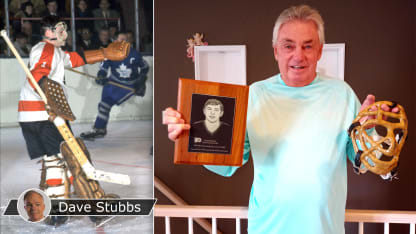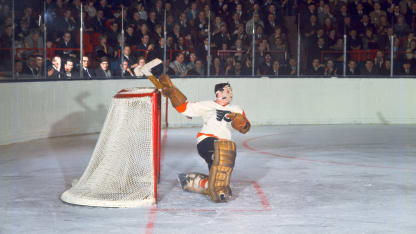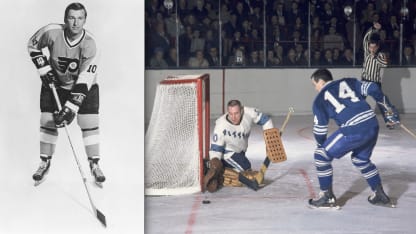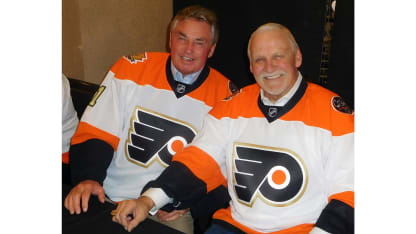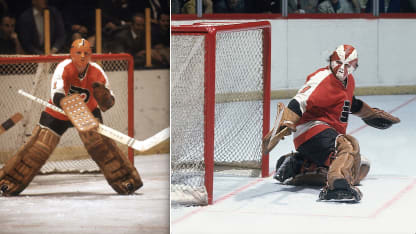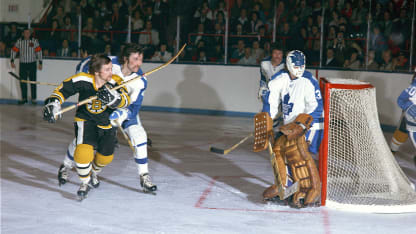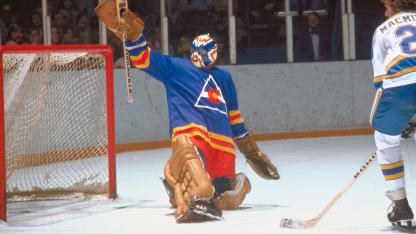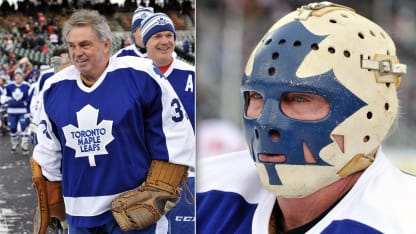Doug Favell with his mask a Flyers and pumpkin orange for an Oct. 29, 1970 Halloween-season game, and the starburst design paint job that would follow it. Getty Images
Allen came back with Favell in St. Louis on Oct. 18, which would be a franchise-first 2-1 win for Philadelphia, and again the next night, for the Flyers' inaugural home game.
"When you're winning, they like you," Favell said, chuckling. "I didn't even think I'd be with the Flyers to start the season; I thought I'd be in Quebec. But I had such a good camp, they had to keep me up."
That meant sending 38-year-old Al Millar, a veteran with a competitive history as long as a goalie stick, down to the AHL with his six games of NHL experience, having played briefly for the Bruins in 1957-58.
Favell played the rest of the four-game homestand, going 1-1 with one tie, Parent then drawing the assignment for back-to-back games against the Montreal Canadiens, earning a win and a tie against his hometown team.
Their workload through 1967-68 was remarkably similar. Favell went 16-15-6 with a 2.27 goals-against average, .931 save percentage and four shutouts in 37 games, facing 1,204 shots. Parent was 15-17-5, with a 2.49 GAA and .926 save percentage, also with four shutouts, facing 1,249 shots in 38 games.
